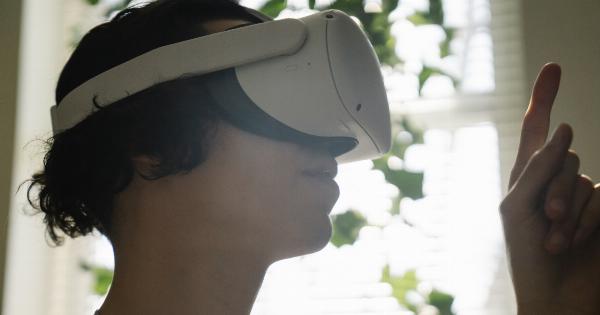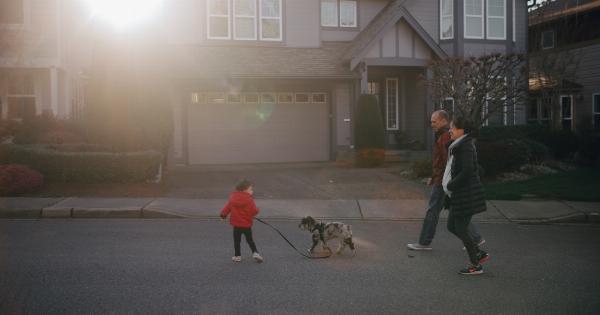Blindness and view are two contrasting concepts that, when combined, can result in a dangerous situation.
Blindness refers to the inability to see or perceive visual stimuli, while view represents the act of observing and comprehending one’s surroundings. The coexistence of blindness and view presents unique challenges and potential risks that need to be addressed with utmost care and attention.
The Challenges of Blindness
Being blind poses numerous challenges in various aspects of life. Individuals who are blind often rely on other senses, such as hearing or touch, to navigate their environments.
The absence of sight can make simple tasks, like crossing a street or moving around in unfamiliar places, extremely difficult. Consequently, blind individuals require specialized tools, like white canes or guide dogs, to enhance their mobility and independence.
Moreover, blind individuals face social and emotional challenges. Society’s lack of understanding and awareness can lead to discrimination and isolation.
Additionally, the inability to see expressions or body language can impair communication and limit social interactions, further exacerbating these challenges.
The Power and Importance of View
Having a view, or the ability to see, is often taken for granted by those who possess it naturally. The power of sight enables individuals to gather information, perceive the world around them, and make decisions based on visual cues.
A view plays a fundamental role in communication, interaction, and understanding of one’s environment.
Visual perception provides vital information about spatial awareness and depth perception. For instance, it allows us to judge distances, recognize objects, and assess potential dangers.
Having a view empowers individuals to make informed decisions, avoid hazards, and maintain overall safety.
The Dangerous Combination: Blindness and View
When blindness and view intersect, a dangerous combination arises.
This can occur in various situations, including when a sighted person tries to navigate an environment designed primarily for individuals with sight impairments or when a blind person attempts to interpret visual information without appropriate guidance or assistance. The mismatch between perception and reality can lead to grave consequences.
For example, a sighted person without knowledge of the blind person’s surroundings may inadvertently place objects in their path, leading to potential accidents.
Similarly, a blind person attempting to interact with their surroundings solely based on verbal descriptions or limited tactile feedback may not be aware of immediate dangers. This mismatch between their experience and the physical reality can result in injury or harm.
The Role of Accessibility
To mitigate the risks associated with the combination of blindness and view, accessibility plays a crucial role.
Accessibility refers to creating an inclusive environment that accommodates and supports individuals with various abilities and disabilities. In the context of vision impairment, accessibility can involve design considerations, technological advancements, and awareness initiatives to bridge the gap between blindness and view.
Considerations for accessibility include implementing tactile or auditory cues in public spaces, such as textured flooring or audible signals at crosswalks.
These adaptations assist blind individuals in understanding their surroundings and navigating safely. Additionally, providing clear and concise verbal descriptions of visual information, enhancing lighting conditions, and ensuring color contrast can significantly improve the accessibility of environments for individuals with blindness.
Technological advancements have also revolutionized accessibility for individuals with blindness. Screen readers and text-to-speech software enable blind individuals to access digital content, read documents, and navigate websites.
Moreover, assistive technologies, like braille displays and magnification tools, facilitate information access and promote independence in various settings.
Furthermore, raising awareness about the challenges faced by individuals with blindness is crucial in driving societal change.
Educating the public about effective communication strategies, respectful interaction, and inclusive practices fosters empathy, understanding, and a more inclusive society as a whole.
Risk Mitigation in Daily Life
Blindness and view intersect in our daily lives, and it is essential to mitigate potential risks associated with this combination. Here are some strategies for enhancing safety:.
1. Communication and Clear Instructions
When interacting with individuals with blindness, it is crucial to communicate clearly and provide explicit instructions.
Using descriptive language and avoiding visual references can help bridge the gap between what they perceive and the actual environment.
2. Providing Physical Supports
Physical supports, like handrails, guide wires, or tactile flooring, can assist blind individuals in navigation. Implementing these features in public spaces improves accessibility and reduces the risk of accidents.
3. Orientation and Mobility Training
Orientation and mobility training empower individuals with blindness to develop essential skills for independent navigation.
These training programs provide techniques for spatial awareness, using assistive tools like canes or guide dogs, and understanding common environmental cues.
4. Collaboration and Partnership
Partnerships between blind individuals and sighted individuals can provide a valuable support system. Sighted individuals can offer guidance and assistance when navigating unfamiliar or hazardous environments, ensuring the blind person’s safety.
5. Utilizing Accessible Technology
Accessible technology, including screen readers, braille displays, and navigation apps, can enhance the independence and safety of blind individuals.
Embracing and utilizing these technologies promotes inclusivity and reduces the risks associated with blindness and view combination.
The Benefits of Collaboration
Collaboration between organizations, individuals, and governments is essential in addressing the risks associated with the combination of blindness and view.
By working together, we can create more accessible environments, implement inclusive practices, and raise awareness about the challenges faced by individuals with blindness.
Furthermore, organizations and governments can invest in research and development to improve assistive technologies.
Advancements in wearable devices, smart navigation systems, and sensory augmentation techniques can empower individuals with blindness, reduce risks, and promote their overall well-being.
Conclusion
The combination of blindness and view has significant implications for individuals with visual impairments. It underscores the importance of accessibility, awareness, and collaboration to ensure a safe and inclusive society.
By prioritizing the needs of individuals with blindness, we can bridge the gap between blindness and view, reduce potential risks, and foster a more accessible world for all.



























